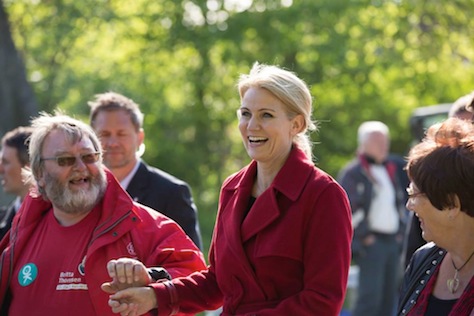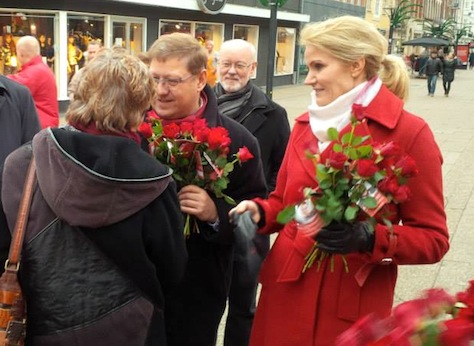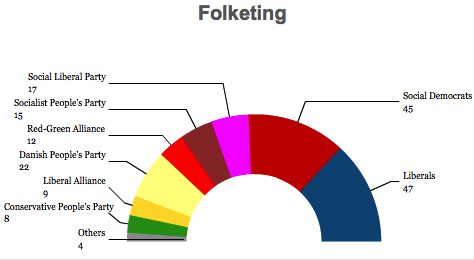
Not so long ago, British prime minister David Cameron suggested that his Danish counterpart, Helle Thorning-Schmidt, would make a good alternative candidate for the presidency of the European Commission.![]()
Thorning-Schmidt (pictured above) demurred the speculation. Ultimately, European leaders embraced former Luxembourg prime minister Jean-Claude Juncker and instead of seeking a safe job in Brussels, Thorning-Schmidt became increasingly convinced that she could lead her center-left government to reelection in a vote originally expected in September.
A Rorschach test for EU economic policy?
Thorning-Schmidt called snap elections for June 18, hoping to take advantage of a growing sense of momentum. Indeed, she may have taken a different sort of comfort from Cameron, who last month won an even stronger mandate for a second term in his own general election. After a period of GDP contraction and fiscal tightening, Thorning-Schmidt is betting that nascent economy recovery and the promise of greater welfare spending in the years ahead will be enough to replicate Cameron’s feat in Denmark.
If she succeeds, both sides on the European debate over economic policy will try to claim victory. For the European center-right, a Thorning-Schmidt victory would provide more evidence that an electorate is willing to reward a government’s hard grind to demonstrate fiscal stability. For the European center-left, it would show the way forward for social democrats struggling to salvage, reform and reinvent the welfare state in an age of austerity.
Furthermore, as the second-most populous Nordic country, Denmark (with 5.7 million people) is a weathervane of all the recent political, cultural and economic trends across northern Europe — and where the region may be headed.
How Helle turned a near-certain defeat into a dead heat
Thorning-Schmidt is the leader of the Socialdemokraterne (Social Democrats), the largest party on the Danish left, and she leads an informal ‘red’ coalition of parties that may be willing to join forces for a broad leftist government after the election. Not surprisingly, she won sympathy from voters in the wake of a radical Islamic attack on a Copenhagen cafe and synagogue in February. Moreover, she is hoping that forecasts of 1.5% or greater GDP growth will overshadow the GDP contraction and fiscal contraction that marked the first half of her government. Continue reading How Helle got her groove back in Denmark’s snap election

